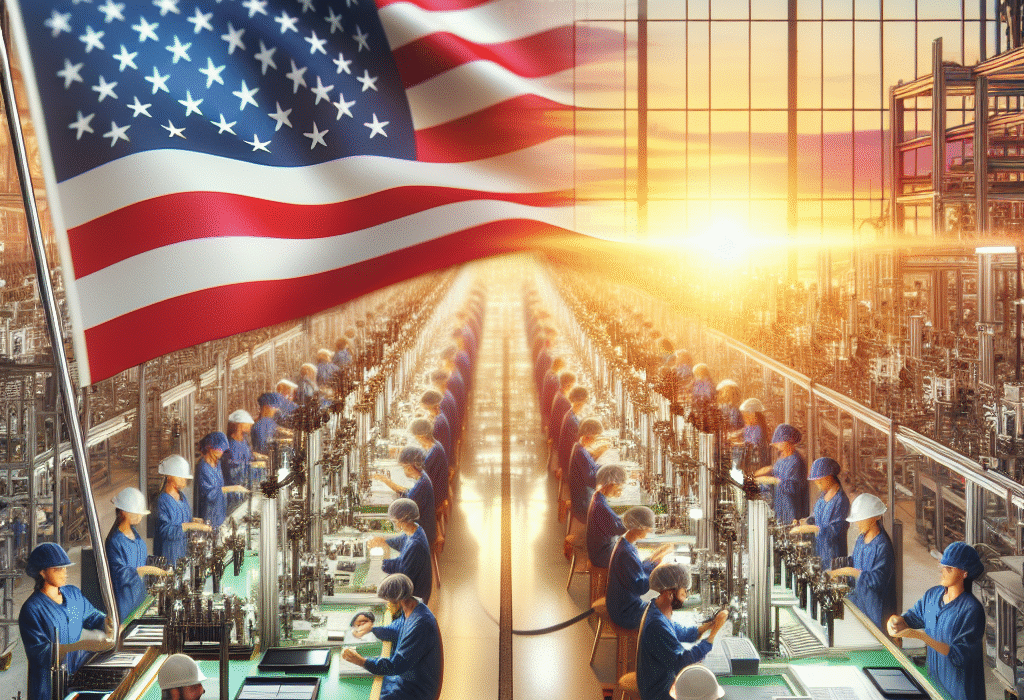The Evergreen Debate: iPhone Manufacturing in the USA
Have you ever wondered why your beloved iPhone, a pinnacle of technological innovation, isn’t made in the USA? You might have noticed that Apple’s iconic device is manufactured overseas, primarily in China. But what if Apple decided to bring iPhone manufacturing back home to the United States? Let’s explore this intriguing possibility and see what this could mean for you as a consumer.
The Global Manufacturing Landscape
Today, the idea of bringing significant manufacturing operations back to the United States seems like a Herculean task. The current global economy, with its intricate supply chains, outsourcing practices, and cost considerations, favors offshoring to countries with lower labor costs like China, Vietnam, or Mexico. However, recent geopolitical tensions and trade uncertainties have sparked discussions about diversifying supply chains and reshoring manufacturing activities.
Apple’s Manufacturing Footprint
Apple, one of the world’s most valuable companies, relies heavily on China for iPhone manufacturing. The country’s robust infrastructure, skilled labor force, and specialized component suppliers make it an attractive location for large-scale production. While Apple has made efforts to diversify its manufacturing base by setting up some operations in India and Brazil, China remains the primary hub for iPhone assembly.
The Case for iPhone Manufacturing in the USA
Despite the challenges, there are compelling reasons why Apple might consider shifting some of its iPhone manufacturing processes to the USA:
-
Mitigating Risks: Recent trade tensions between the US and China have exposed the vulnerabilities of relying heavily on a single manufacturing location.
-
Tax Incentives: The US government offers tax breaks and incentives to companies that produce goods domestically, making it financially appealing to consider manufacturing in the USA.
-
Quality Control: By having manufacturing operations closer to its headquarters, Apple can exercise stricter quality control and oversight over its supply chain.
-
Job Creation: Bringing manufacturing jobs back to the US can be a powerful PR move for Apple, showcasing its commitment to supporting local economies.
Challenges and Considerations
As attractive as the idea of iPhone manufacturing in the USA may sound, several challenges and considerations need to be taken into account:
-
Labor Costs: Labor costs in the US are significantly higher than in countries like China, which could affect the final retail price of iPhones.
-
Infrastructure: The US would need to invest in building or repurposing manufacturing facilities, which entails significant time and resources.
-
Supply Chain Complexity: Apple’s intricate global supply chain would require restructuring to accommodate US-based manufacturing.
What This Means for You
As a consumer, the prospect of iPhones being made in the USA might evoke feelings of patriotism or a sense of connection to locally produced goods. However, it’s essential to recognize that this shift could have implications for you as well:
-
Price Impact: iPhone manufacturing in the USA could lead to higher retail prices due to increased production costs.
-
Quality Assurance: Domestic manufacturing may result in better quality control and faster response times for product recalls or issues.
-
Job Opportunities: The creation of manufacturing jobs in the US could benefit local communities and contribute to economic growth.
The Future of iPhone Manufacturing
While the idea of iPhone manufacturing in the USA seems like a distant possibility, it’s essential to keep an eye on how global trends, trade policies, and consumer preferences evolve. Apple’s decisions regarding its manufacturing footprint can shape not only the company’s future but also the larger conversation around reshoring and supply chain resilience.
So, here’s the deal, the debate around iPhone manufacturing in the USA is not just about where a product is made but also about the broader implications for the economy, jobs, and innovation. As technologies and market dynamics continue to evolve, it will be fascinating to see how companies like Apple navigate these complexities and what impact it has on consumers like you.
What are your thoughts on Apple potentially bringing iPhone manufacturing to the USA? Let me know what you’d choose.







